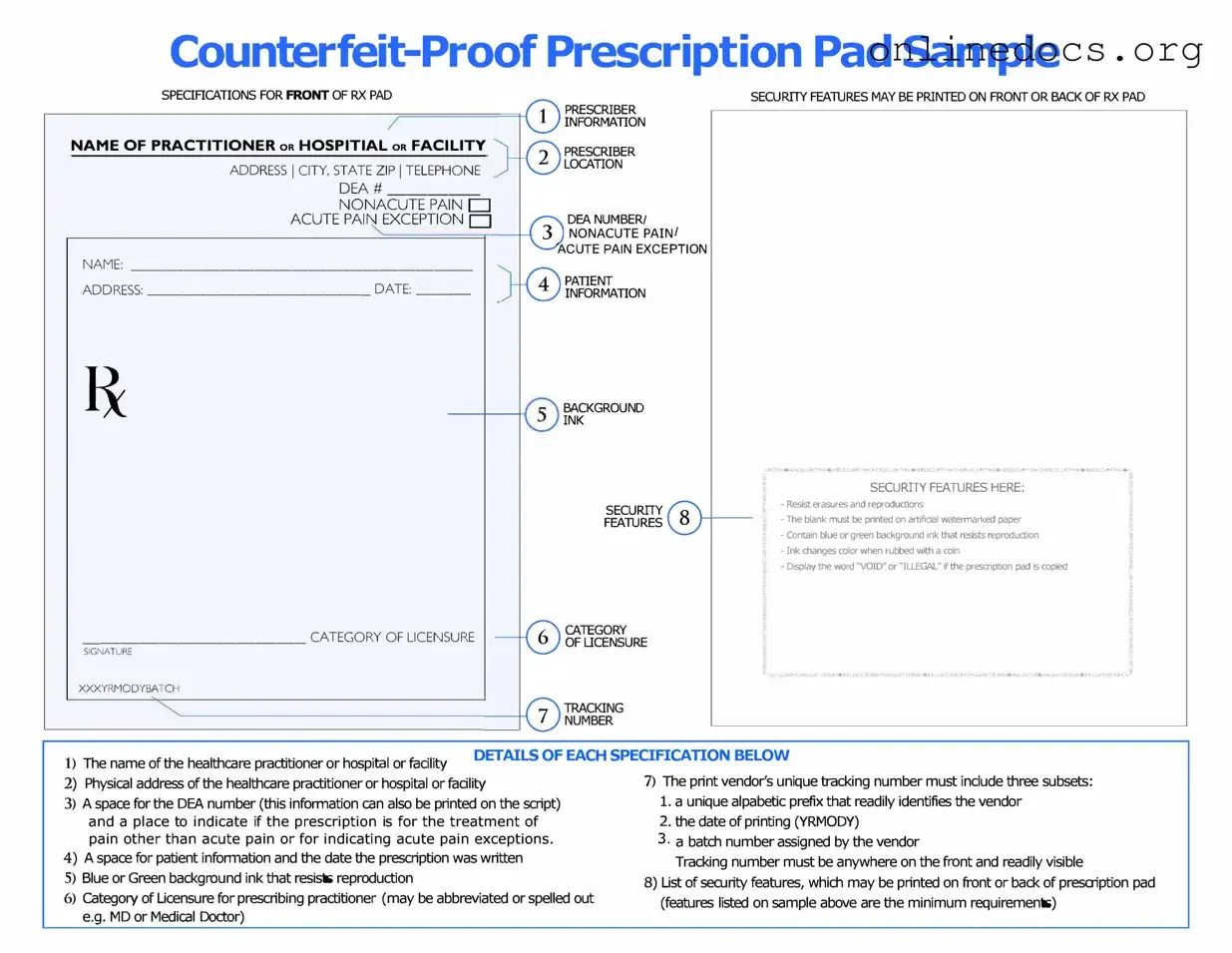Filling out a Prescription Pad form can seem straightforward, but many people make common mistakes that can lead to delays or complications in receiving medication. Understanding these pitfalls can help ensure that the process goes smoothly. Here are ten mistakes to avoid when completing this important document.
One frequent error is not including the patient's full name. It’s essential to write the complete name as it appears on their identification. Omitting parts of the name can lead to confusion at the pharmacy, resulting in delays or the wrong medication being dispensed.
Another mistake is failing to provide accurate dosage information. It is crucial to specify the correct dosage, as this information directly impacts the patient's treatment. Inaccurate dosages can lead to ineffective treatment or, worse, harmful side effects.
Many people also forget to include the correct date on the form. The date is vital for the pharmacy to determine the validity of the prescription. Without it, the prescription may be considered outdated, and the pharmacy might refuse to fill it.
Additionally, not specifying the medication's quantity can create confusion. Patients should clearly indicate how many pills or units they need. This detail helps ensure that they receive enough medication to last until their next appointment.
Some individuals mistakenly leave out refill information. If refills are necessary, it's important to specify how many are allowed. This omission can lead to interruptions in the patient's treatment plan.
Another common oversight is illegible handwriting. If the form is difficult to read, pharmacists may misinterpret the information. It’s advisable to print clearly or use a typewriter if available to avoid any misunderstandings.
In some cases, people forget to include the prescribing physician's signature. A signature is a critical component of a valid prescription. Without it, the pharmacy cannot legally fill the medication, leaving the patient without their needed treatment.
Some individuals may also neglect to indicate the patient's birth date. Including this information helps confirm the identity of the patient, especially in cases where multiple individuals may have similar names.
Additionally, not checking for allergies can be a serious mistake. If a patient has known allergies to certain medications, this information should be clearly noted on the form to prevent any adverse reactions.
Lastly, not reviewing the completed form before submission can lead to many of these errors going unnoticed. Taking a moment to double-check all entries can save time and ensure that the patient receives their medication without unnecessary delays.
